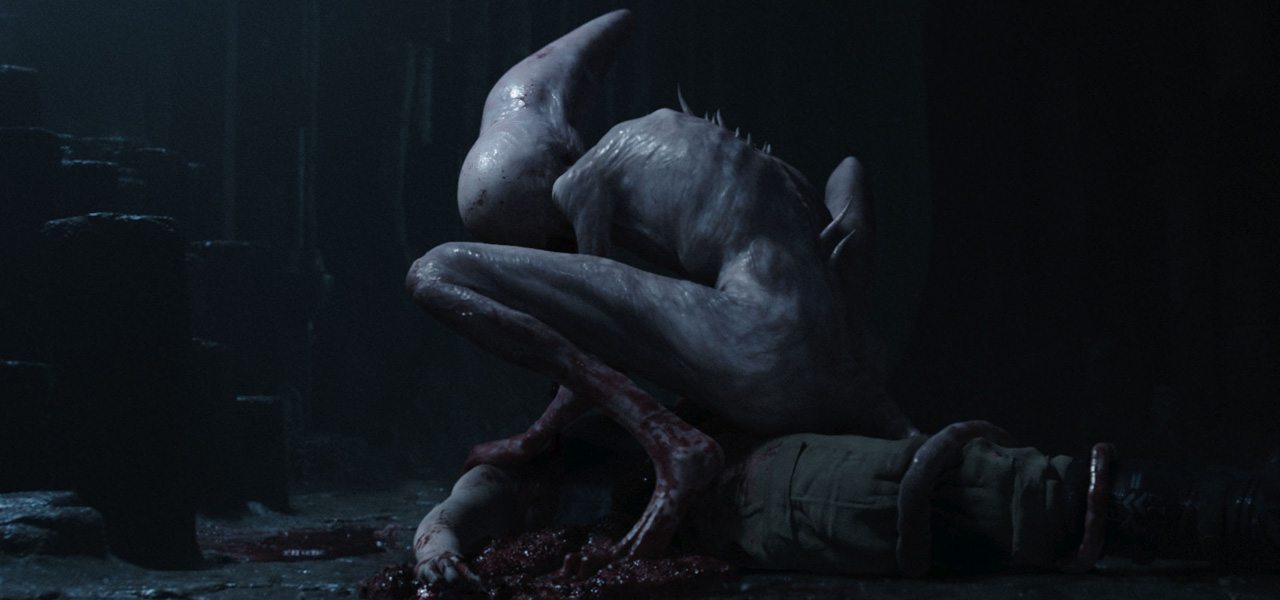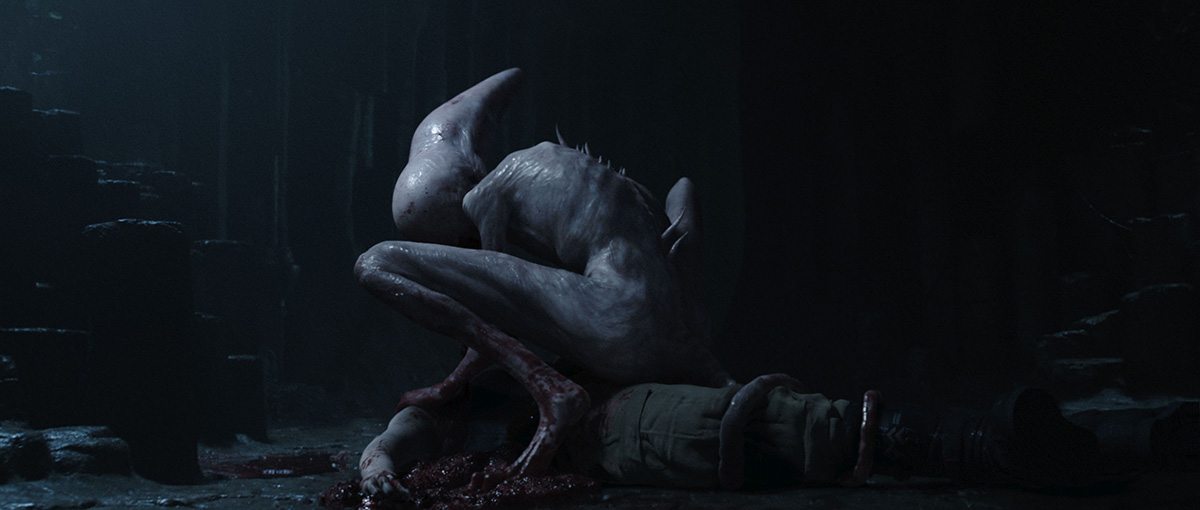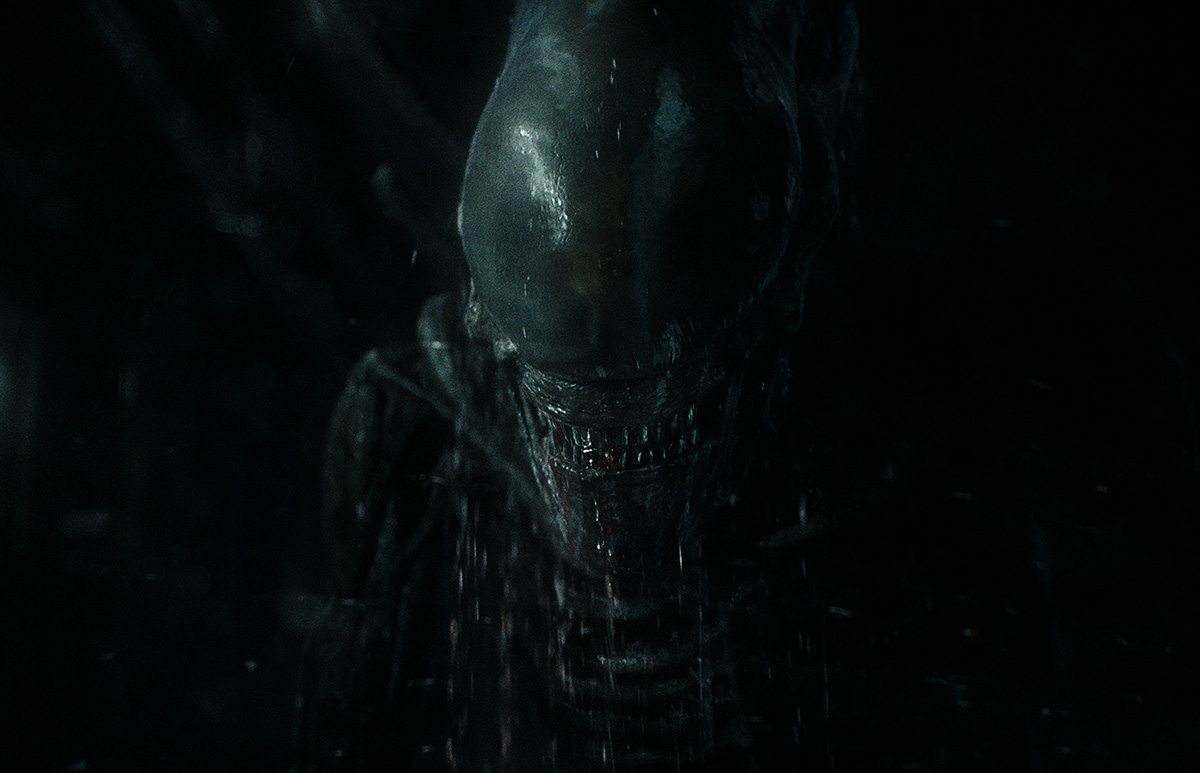

‘Alien: Covenant’: How On-set Suit Performances, Mo-cap, And VFX Each Played A Role In Production
The two central creatures of Alien: Covenant are the familiar Xenomorph, and the not-so-familiar Neomorph, a new monster inside Ridley Scott’s Alien universe.
Both species were ultimately realized in cg by visual effects shop MPC for the film, but getting to a final performance took several steps – from design, to building practical reference and puppets, having on-set suited actors, using motion capture, and animating digital versions.
Cartoon Brew explores what it took to find the right movement and behavior for the Xenomorph and Neomorphs in the film with overall visual effects supervisor Charley Henley from MPC.
Build it
A number of the previous Alien films had, of course, taken advantage of the state of the art in practical creature effects to represent the aliens on screen. Modern digital visual effects could certainly be used to showcase photorealistic creatures in full motion, but Scott still wanted something on set with which to shoot.


That led visual effects supervisor Charley Henley and the film’s creature design supervisor Connor O’Sullivan from Creatures Inc Ltd, and co-creature effects supervisor Adam Johansen from Odd Studio, to orchestrate a plan of shooting practical aliens, knowing that things could still be replaced in cg later on.
“We knew that Ridley would want to see for real something that relates to his creatures, which we could adapt beyond that later on,” said Henley. “But, we said, let’s build a hero version of the creatures just for the look. It doesn’t have to be in a suit, it doesn’t have to be practically operated on the set, but it will help the design process and allow Ridley to finesse the design by building something real that he can tangibly look at and tweak.”
This became what was called the ‘Looker’ versions of the aliens, since they ‘looked good.’ But things did go further, with the design and fabrication of several versions of the two main creatures, seen in the film from their young states (in which they burst out of human bodies) to fully grown sizes. Suits and head pieces containing animatronics were some of the more elaborate builds, made with the combined forces of Creatures Inc and Odd Studio.


The intention was still for these practical builds to be stand-ins. However, some practical shots remain in the film. “There’s a tail that you see in the shower scene that is the practical tail,” said Henley. “As are some of the gore effects with the smaller creatures coming out – for the earlier birth of the creatures we kept it practical because it just worked in camera so well.
“The extra complexity of doing cg gore with blood and sinew and all these kind of effects is, well, if it works practically we didn’t need to replace it and it saved us a lot of hassle,” continued Henley. “But we ended up doing a lot of cg gore, too, which was quite interesting. It was a mix and match kind of game.”
Suit performers Andrew Crawford and Goran D. Kleut, and stunt performers, took on the roles of the Xenomorph and Neomorph on set. Creature shots were achieved on set using the practical creature effects builds, or the suited actors, with clean plates also acquired.

“Our first step was to allow the camera guys to set-up with the stand-in man in a suit,” said Henley. “Ridley could frame on it, he could do his first pass directing the action and block it out. Then we would discuss whether actually this creature needed to move faster, so that meant the actors and filmmakers would have to just imagine that action happening, or we’d bring in the stunt guy because he could do the moves, whereas the guy in the suit couldn’t.”
Finding the right movement in cg
Earlier, MPC and a team of previs artists had already explored the motion of the creatures. Early models were used for test animations, and then later refined during and after the shoot with more design and modeling, taking in photogrammetry scans of the suits and alien pieces that had been built practically.


Although the on-set suited performances were incredible references, the performers were still limited in how much they could act like a Xenomorph or Neomorph. So the visual effects team further explored the movement via motion capture. MPC had their cg model that the mocap could be re-targeted to, and that allowed what Henley says was almost an ‘experimental’ period in finding the right animation. “Ridley’s brief was, can we find something off-edge here?” related Henley. “It didn’t have to be too ordinary, but it didn’t need to be fantastical either.”
In addition, physical artists were hired to provide reference, including Javier Botet. The actor suffers from Marfan syndrome and has exceptionally long fingers and a tall, thin build, and was able to deliver something other-worldly for the creatures. “We got him to do some performance videos which gave us some really great inspiration,” said Henley.
Ultimately, all the creatures would be keyframe animated, with mocap or roto-mation being just the start of the animation process. The experimentation allowed the director to explore the right look – the creatures had not really been shown full frame and with so much motion in the previous films. This meant that occasionally Scott would suddenly ‘jump’ on a piece of animation he found compelling.


“We were in editorial and Ridley was watching something of one of the Neomorphs running,” said Henley, “and he was like, ‘Stop there, freeze frame that!’ and he got up and took his phone out and he took a picture of it on the monitor. Then all the animators had to take this and stick it on their wall. It was all about getting the style of what he really liked.”
